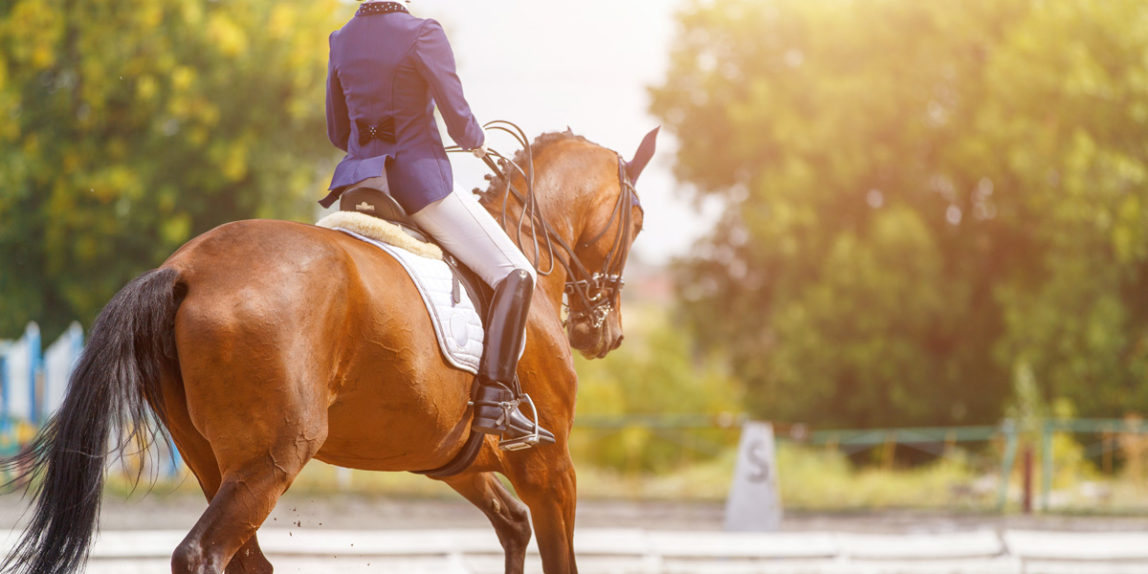Horses have been used as a method of transportation for thousands of years, with archaeological evidence suggesting that horse domestication began in Central Asia as far back as 5,500 years ago. Stagecoaches, sometimes pulled by as many as eight horses, were the primary method of transportation from about the 13th century until the introduction of the automobile in the early 1900s.
Equestrian, which involves riding horses for sport, traces its roots back to ancient Greece. The Greeks created dressage, one of the sport’s many disciplines, to train horses for war. Chariot races were also part of the Ancient Olympic Games as far back as 680 BCE.
If you want to know more about equestrian and its history, here are answers to five of the most commonly asked questions about the sport.
1. What Are the Origins of Equestrianism?
Dressage, one of the most popular and earliest equestrian disciplines, was conceived as a wartime training method to increase synchronization between the horse and rider, which was believed to improve combat effectiveness. Thus, the ancient Greeks began training horses to execute a series of routine movements to memory.
Other disciplines, like jumping, were also developed for practical applications. In early 16th-century England, farmers began fencing off their land to keep pests out. As a result, they had to train horses to jump these obstacles while carrying riders. During the Renaissance, European aristocrats routinely hosted pageants to highlight the skills and artistry of highly trained horses.
The opening of the Spanish Riding School in Vienna, Austria, in 1572 was a landmark moment in the history of equestrianism as it established an order for horsemanship. The sport achieved a new level of popularity in 1868 with the first-ever Royal Dublin Horse Show, at which point the three main disciplines were jumping, dressage, and eventing.
2. How Many Equestrian Disciplines Are There?
Today there are eight internationally recognized equestrian disciplines. Eventing is an equestrian triathlon that combines dressage and show jumping with a cross-country stage in which the horse and rider have to navigate a series of obstacles and terrain.
The other five international disciplines are combined driving, endurance, reining, vaulting, and para-equestrian. Endurance is the most physically demanding on both the horse and the rider, as the long-distance race, which covers diverse terrain and altitude, can be as long as 160 kilometers in one day. Some marathon rides can cover as much as 400 kilometers and last five days.
The United States Equestrian Federation also recognizes national disciplines such as English pleasure, hunter, carriage pleasure driving, and saddle seat.
3. What Equipment Is Required?
The equipment required for most equestrian disciplines is no different from the equipment needed for everyday horse riding. Riders should be appropriately dressed in an approved helmet, boots, breeches, jacket, shirt, and gloves, sitting atop an English saddle. An English snaffle bit is also required. This type of horse bit is placed into the horse’s mouth so that the rider can direct the animal by applying and releasing pressure. Stirrup irons and leather, grooming tools, and a horse blanket or sheet are other necessary pieces of equipment.
4. Is Equestrian Contested at the Olympic Games?
Dressage, jumping, and eventing were first contested at the Olympics in the 1912 Games in Stockholm but were originally scheduled to be part of the 1908 Games in London. The International Olympic Committee agreed to the proposal of Count Clarence von Rosen, Master of the Horse to the King of Sweden, to add these events to the Olympic program in 1906, but they weren’t contested at the 1908 Games due to issues with the International Horse Show Committee.
Carl Bonde (Sweden) won the first-ever Olympic gold medal in individual dressage, and Sweden also captured gold in the team eventing competition. Axel Nordlander (Sweden) and Jacques Cariou (France) won the first-ever Olympic gold in eventing and jumping, respectively.
Equestrian has remained part of the Olympic program since 1912 and today includes individual and team dressage, jumping, and eventing. Germany is the most accomplished nation in Olympic equestrian with 56 medals, including 28 gold. Sweden, France, Great Britain, and the United States are the only other countries to win at least 40 medals. German rider Isabell Werth is the most decorated Olympian in equestrian history with 12 medals, seven of which are gold.
5. Are There Any Other International Competitions?
The Fédération Equestre Internationale (FEI) hosts the annual World Championships, which includes jumping, vaulting, eventing, driving, dressage, and para-dressage. Athletes from 70 countries participated in the 2022 FEI World Championships in Herning, Denmark.
Other prominent equestrian events include the Land Rover Kentucky Three-Day Event, the Badminton Horse Trials, the Devon Horse Show, and the Royal Horse Show. The Devon Horse Show, launched in 1896, is the oldest outdoor multi-breed horse-rider competition in the United States.
